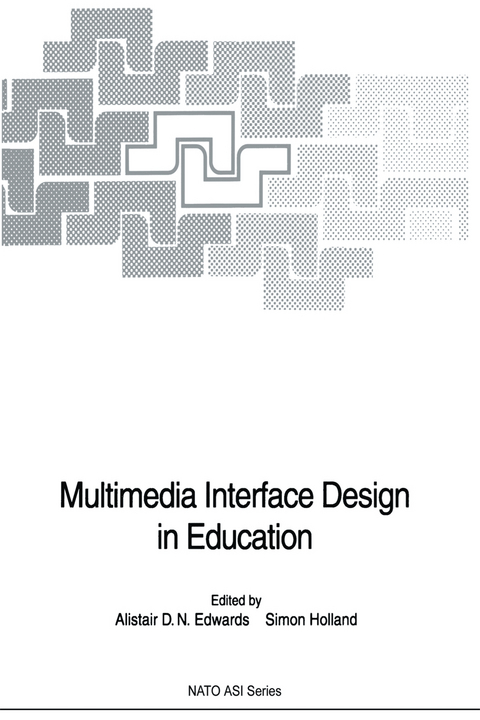
Multimedia Interface Design in Education
Springer Berlin (Verlag)
978-3-642-63477-2 (ISBN)
What the book is about This book is about the theory and practice of the use of multimedia, multimodal interfaces for leaming. Yet it is not about technology as such, at least in the sense that the authors do not subscribe to the idea that one should do something just because it is technologically possible. 'Multimedia' has been adopted in some commercial quarters to mean little more than a computer with some form of audio ar (more usually) video attachment. This is a trend which ought to be resisted, as exemplified by the material in this book. Rather than merely using a new technology 'because it is there', there is a need to examine how people leam and eommunicate, and to study diverse ways in which computers ean harness text, sounds, speech, images, moving pietures, gestures, touch, etc. , to promote effective human leaming. We need to identify which media, in whieh combinations, using what mappings of domain to representation, are appropriate far which educational purposes . . The word 'multimodal ' in the title underlies this perspective. The intention is to focus attention less on the technology and more on how to strueture different kinds of information via different sensory channels in order to yield the best possible quality of communication and educational interaction. (Though the reader should refer to Chapter 1 for a discussion of the use of the word 'multimodal' . ) Historically there was little problem.
1. The 'M-Word': Multimedia Interfaces and Their Role in Interactive Learning Systems.- 2. Hunting Musical Knowledge in Darkest Medialand.- 3. 'Rights in the Mirror': An Interactive Video Drama Programme About Human Rights Education.- 4. On-Site Distance Learning: A Multimedia Full-Scale Experiment in Denmark.- 5. 'Playing' Graphics in the Design and Use of Multimedia Courseware.- 6. Design Guidelines for Electronic Book Production.- 7. Computer-Controlled Video for Intelligent Interactive Use: A Description Methodology.- 8. Representing Musical Relationships in the Harmony Grid.- 9. Communicating and Learning Through Non-speech Audio.- 10. Redundancy and Adaptability.- 11. Multimodal Communication, Natural Language and Direct Manipulation (Gestures) in Human-Computer Interaction.- 12. Interface Design for Empowerment: A Case Study from Music.- 13. Notes While Waiting for the View to Clear.- Glossary of Compact Disc Technology.- Trademarks.- Authors' Addresses.
| Erscheint lt. Verlag | 3.10.2013 |
|---|---|
| Reihe/Serie | NATO ASI Subseries F: |
| Zusatzinfo | XII, 223 p. |
| Verlagsort | Berlin |
| Sprache | englisch |
| Maße | 170 x 244 mm |
| Gewicht | 427 g |
| Themenwelt | Mathematik / Informatik ► Informatik ► Betriebssysteme / Server |
| Informatik ► Software Entwicklung ► User Interfaces (HCI) | |
| Informatik ► Theorie / Studium ► Künstliche Intelligenz / Robotik | |
| Schlagworte | action • Artificial Intelligence • Human-Computer interaction • Human-Computer Interaction (HCI) • Intelligence • learning • Multimedia |
| ISBN-10 | 3-642-63477-X / 364263477X |
| ISBN-13 | 978-3-642-63477-2 / 9783642634772 |
| Zustand | Neuware |
| Haben Sie eine Frage zum Produkt? |
aus dem Bereich


